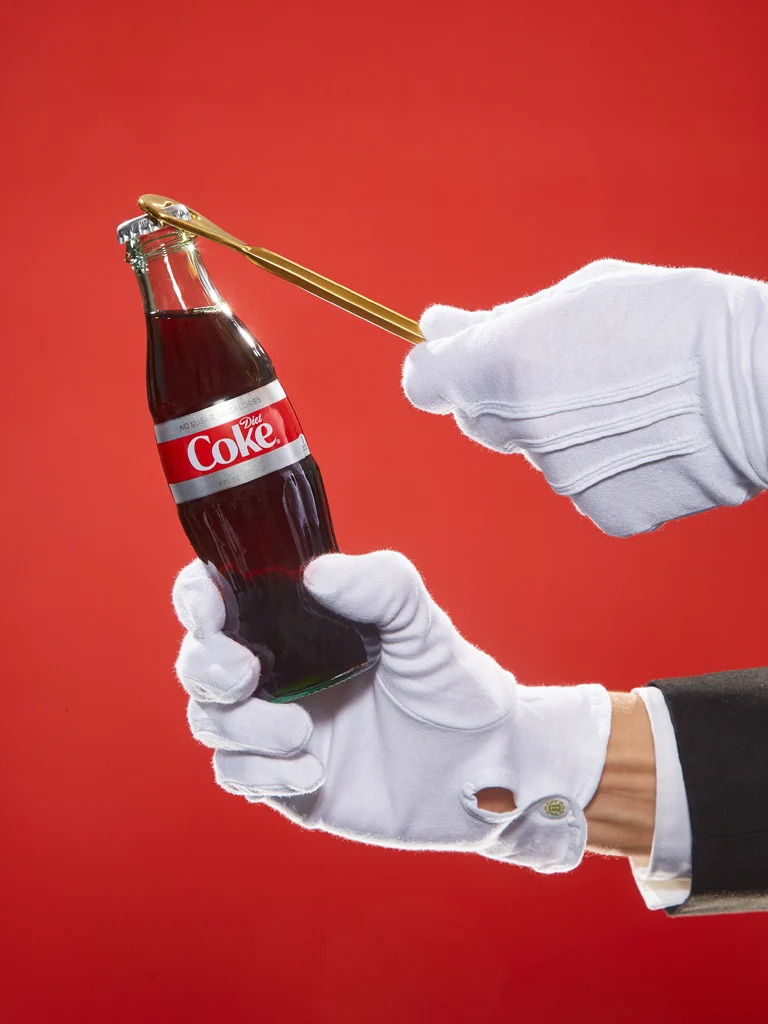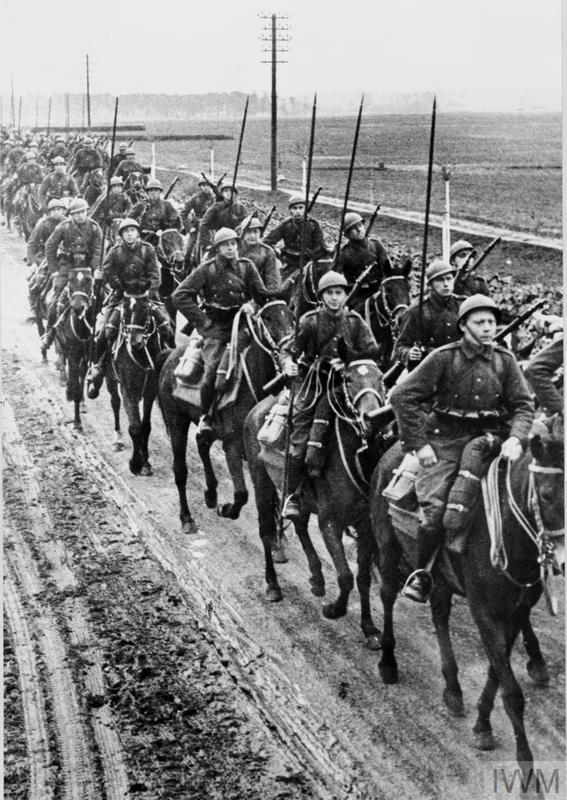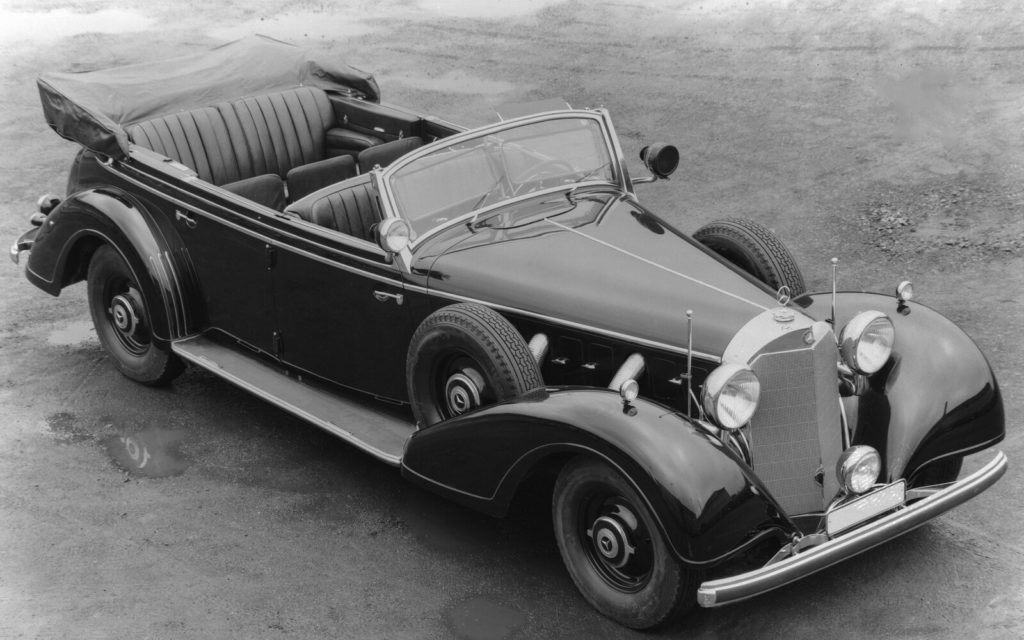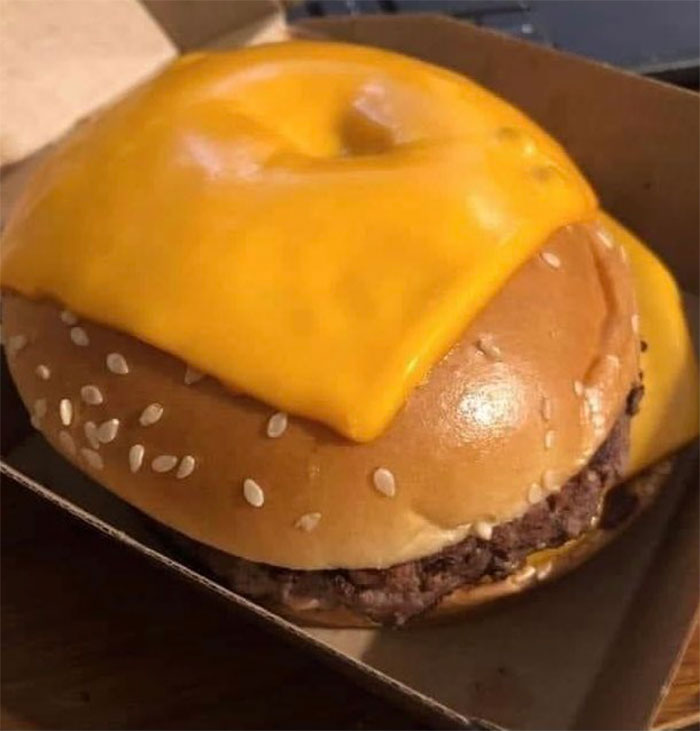Every now and then, someone creates a political party or runs for head of state as a joke – and then wins or comes close to winning, shocking the nation. Mogens Glistrup was a professor at the University of Copenhagen in the 1960s when he founded the Progress Party. Most people thought the party was a joke. For example, Glistrup’s national defense platform was to abolish the Danish armed forces and replace them with an answering machine that said: “We surrender” in Russian. Remember, this was at the height of the Cold War, and Russian troops in East Germany were less than 50 miles from Denmark. In 1973, Glistrup’s Progress Party won a landslide victory in national elections, making his party the second largest in the Danish parliament. The Danish establishment was horrified, as were Denmark’s NATO allies. In case you are thinking: “This nut sounds like he came from Berkeley”, well, he did. Glistrup attended U.C. Berkeley in the 1950s.
WORST APPLICATION EVER. A couple of cat tales.
DO YOU RENT TO CATS? I once got a phone call from a woman inquiring about an apartment I had for rent. She said: “I saw your ad for a 1-bedroom apartment for rent. I have a question. Do you rent to cats?” I thought that was an oddly worded question, so I phrased my answer carefully. I said: “No, I don’t rent to cats, but I do rent apartments to people with cats.” The woman said, in a dejected voice: “Oh, that’s too bad” and hung up the phone. I never heard from her again. Although this happened many years ago, I still think about this incident occasionally and wonder what was on this woman’s mind.
A GERMAN SHEPHERD IS NOT A CAT. On another occasion, a man applied for this same apartment. On his application form, he answered the question: ‘Do you have a pet?’ with ‘Yes. Cat’. I asked him some questions about his cat, but he gave me evasive answers, so I told him that I wanted to see his cat. I asked him: “Do you have a photo of your cat on your cell phone?” He reluctantly said that he did and pulled up a picture. I looked at the photo and said: “This is a photo of you standing next to a German shepherd.” He said: “Yeah. Her name is Sophie.” I said: “I don’t understand. A German shepherd is a dog. Why did you tell me that you have a cat?” He said: “Well, in your ad, you checked off that a cat was OK, but you didn’t check off that a dog was OK.” I said: “So you thought that if we agreed to call your German shepherd a cat, then that would make it a cat.” He said that was his line of thinking. I decided to rent the place to somebody else.
Extra Cheese.
WHY DON’T I ALLOW TENANTS TO PAY THEIR RENT WITH CREDIT CARDS?
The reason is the obvious one – I don’t want to pay the credit card processing fees. In Berkeley, landlords who own older buildings, like me, don’t accept credit cards. Some of the new buildings do accept credit cards, but that is because their rents are vastly higher than the rents in older buildings. In the new apartment houses near campus, a 1-bedroom apartment can cost $3,000 a month – or more. There is an apartment house across the street from campus that is charging $5,000 a month for 1-bedroom apartments, and it’s fully rented. I sometimes look at the students going into these new buildings and think: “I know that building charges $3,500 a month for 1-bedroom apartments. How can college students afford that? They can’t all be rich. They don’t look rich.” Anyway, if I was getting $3,000 or $4,000 a month for 1-bedroom apartments, I would accept credit cards too!
Consider Auto Pay. If you don’t want to write out rent checks every month, consider bank auto-pay. Bank of America, Wells Fargo, and most other major banks offer auto-pay as a free service to their customers. With auto-pay, you can instruct your bank to print and mail checks on a regular basis to anyone who you wish. I use auto-pay myself to mail checks to people who I have to send money to on a regular basis.
JOE BIDEN REMOVES DONALD TRUMP’S DIET COKE BUTTON.
Have you heard about President Trump’s Diet Coke button? When Donald Trump moved into the White House, he had a wood box with a large button in the middle of it placed on the president’s desk. See picture below. Whenever President Trump pushed the button, a butler would come into the Oval Office with Diet Coke. The butler then followed a formal protocol or SOP (Standard Operating Procedure) for serving Diet Coke. President Trump’s Diet Coke SOP has been published. Here it is.

1. The butler discreetly presents a small bottle of hand sanitizer. (Added to the procedure after Covid.)
2. The butler greets the president and presents a polished silver tray to the president for his inspection. On the tray are chilled bottles of Diet Coke and chilled glasses, some with ice in them and some without ice.
3. The butler asks the president if he wants his Diet Coke with or without ice. There is an ice protocol that governs the size, shape, and number of ice cubes to be placed in the glass. Donald Trump prefers ice cubes to shaved ice in his cold beverages. So do I.
4. The butler then opens the bottles in front of the president and never not out of his sight. (Donald Trump has a fear of being poisoned.)
5. The butler is to hold the bottle opener by the lower third and the bottle of Diet Coke in the same position while removing the bottle cap. (See photo below.)
6. The butler is to place the glass of Diet Coke on President Trump’s right-hand side with a cocktail napkin underneath. There is also a napkin protocol.

Donald Trump drinks a lot of Diet Coke, and I mean A LOT of Diet Coke. According to numerous published reports, Trump drinks 12 bottles and/or cans of Diet Coke every day. Frankly, I don’t see how that is possible. How could anyone drink 12 bottles of Diet Coke a day? You know, some people do drink a staggering amount of soda. I know someone who had coronary bypass surgery, and he drinks a minimum of 3 one-liter bottles of regular Coca Cola every day. Have you looked at the largest size soft drink cups at fast food restaurants? They are huge. Below is a picture of a boy drinking a 64-ounce Big Gulp from 7-11.

One of the first things Joe Biden did when he moved into the White House was to remove the Diet Coke button from the president’s desk. I wonder what they did with it. That’s the kind of presidential memorabilia that sells for big bucks at auctions. I know people who would love to have a Diet Coke button and a Diet Coke butler. My nephew said that the Diet Coke button was: “the best thing he (Trump) ever did as president.” I suppose that my nephew could make his own Diet Coke button, but it would be useless because he doesn’t have a Diet Coke butler. Who has a Diet Coke butler?
WORST APPLICATION EVER.
A lot of people assume that when a landlord decides who to rent an apartment to, he picks the applicant who makes the most money, but experienced landlords don’t do that. Naturally, a landlord does want to be sure that an applicant can afford to pay the rent, but the #1 thing a competent landlord is looking for in an applicant is someone who likes the place and wants to live there. I’ve been a landlord for a long time. I know that if I rent an apartment to someone who has a lot of money but who hates the place, that person will be miserable living there, and he will make my life miserable too.That is why I didn’t offer an apartment to the woman I called the Kitchen Crier.
The Kitchen Crier. I once rented a 1-bedroom apartment on McAuley Street in Rockridge during a particularly hot rental market. Several dozen people came to my one and only showing, and 10 of them turned in applications. At the end of the showing, I sat down on the living room couch to review the applications I received. I thought I was alone until I heard the sound of someone crying. I got up to investigate. To my surprise, I found a woman sitting at the kitchen table, stooped over, crying, and holding a handkerchief over her eyes. There was a partially filled out rental application form on the table in front of her. I said: “Are you OK?” She nodded her head and said: “Yes,” so I went back to the living room, wondering what was going on but not knowing what to say. After a while, she came out of the kitchen holding the rental application form. She looked around the living room, paused, and then burst into tears again. I said: “Is there anything I can do?” She shook her head, looked down into the fireplace and said: “No. It’s just that my mother warned me that I’d wind up in a place like this, but I didn’t believe her.” Then she handed me her application form, walked out, and drove away – still crying. It seemed to me that this woman was not going to be happy living in this apartment, so I decided to rent the place to somebody else.
THOUGHT FOR THE DAY.
When people living in states with low Covid vaccination rates (like Mississippi and Alabama) are asked why they won’t get vaccinated, they say it is because they are suspicious of the vaccine. They say they suspect that there may be something bad in the vaccine. Strangely, these are people who have been eating hot dogs, cold cuts, dollar store sausages, and gas station pastries all their lives. I know someone who says that he hasn’t taken the vaccine because: “I’m not sure what’s in it.” He said this as he was pouring generic ‘creamer’ into his coffee, ‘creamer’ that needs no refrigeration and has no expiration date. This guy is around 60 years old and is well educated. And he knows that over 90% of all the people in the U.S. who have died of Covid are over 50. There are millions and millions of people in the U.S. just like this guy. I don’t get it. Do you?
GETTING RID OF ELECTRONIC WASTE – FOR FREE.
It is illegal to put electronic junk in your garbage can; however, you can drop off electronic waste at the eWaste Collective in Berkeley without charge. They will take TVs, computer monitors, stereo equipment, DVD players, and microwave ovens, among other things. It seems like a lot of microwave ovens get illegally dumped on street corners in college towns everywhere at the end of the school year. For their hours and address, go to: eWaste Collective.
ABOUT BATTERIES AND LED LIGHT BULBS. Batteries and LED light bulbs are considered hazardous electronic waste. The eWaste Collective will accept laptop and cell phone batteries for disposal, but they will not accept regular alkaline batteries, and they do not accept light bulbs. If you have used alkaline batteries or LED light bulbs, you can bring them to me, and I will take them to the Alameda County Hazardous Waste Site. Do not bring me damaged or leaky batteries or broken light bulbs. Put your batteries in a closed Ziplok bag first. Put your light bulbs in a separate Ziplok bag. Remember – do not bring me damaged or leaky batteries, auto batteries, or broken light bulbs!
DOGECOIN AND CRYPTOCURRENCY MADNESS.
I am surprised at how many really smart people I know believe that cryptocurrencies will replace the dollar, the euro, etc, as money in the future. I don’t believe that is ever going to happen. Cryptocurrencies are far too volatile to ever be accepted as money, and no government is going to make them legal tender. Consider Dogecoin, the cryptocurrency most in the news right now.
According to Coinbase: “Dogecoin is a cryptocurrency that was created as a joke – its name is a reference to a popular internet meme. It shares many features with Litecoin, However, unlike Litecoin, there is no hard cap on the number of Dogecoins that can be produced.”
The Wall Street Journal described Dogecoin this way last week: “Dogecoin is a cryptocurrency that started as a joke in 2013. It is a satirical homage to bitcoin, designed to serve no real purpose other than generating a few laughs. It is named after an internet meme centered around the image of a Shiba Inu dog with bad spelling habits – thus “doge” instead of “dog.”
From the time Dogecoin was created in 2013 until a few months ago, a Dogecoin sold for a fraction of one cent, and it wasn’t going anywhere. Then Elon Musk threw the Doge a bone. Musk started hyping Doge, and the price rocketed to over 50 cents, a 20,000% gain in less than 6 months. The market cap of Dogecoin (the price per Dogecoin multiplied by the number of them in circulation) is over $60 billion (as of the date I am writing this.) That is more than the market cap of either General Motors or Coca Cola. Dogecoin was created as a joke, and there is no limit on how many of them can be created. Yet, speculators (I refuse to call them investors) are buying Dogecoin as though they imagined that Dogecoin is worth more than the Bank of New York, Walgreens, Ford, or the Coca Cola Company! This is nuts. I think this has to end badly.

NAZI PROPAGANDA THAT AMERICANS BELIEVE IS TRUE.
OK. Here is another one of Mark’s bizarre history stories……It is very common for a story that started off as wartime propaganda to be remembered after the war is over as being true. Usually, people just believe their own government’s propaganda stories, but sometimes people wind up believing propaganda and lies that came from their enemies. Here are some completely untrue stories invented by the Nazis but that are widely believed to be true by Americans and Europeans today.
1. The German Language Vote. According to this myth, anti-British sentiment was so strong in the United States after the American Revolution that Congress voted on a bill to change the national language of the country from English to German and that it lost by one vote. This story has been repeated in countless books and magazine articles. I have met many Americans and even a few Germans who had heard this story and believed it was true. This story was started by the German American Bund in the 1930s. The story is absurd if you think about it. All of the original 13 colonies were founded by English immigrants. At the time of the American Revolution, very few Americans could speak German outside of Pennsylvania, and even in Pennsylvania, German speakers were a minority. So – why would Congress vote to change the language of the United States from English to German, a language which neither they nor their constituents could speak?
2. The Anti-Semitic Founding Fathers. According to this myth, the Founding Fathers of the United States were anti-Semites and that Benjamin Franklin tried to put a clause in the Constitution prohibiting Jews from immigrating to the United States. This story was started by the Silver Legion, another Nazi organization in the U.S. in the 1930s. None of the Founding Fathers had any religious prejudices. Religious tolerance was a fundamental principle of the new country. Many of the original 13 colonies were founded by unpopular religious minorities driven out of Europe. Benjamin Franklin was not antiSemitic. Franklin donated 5 English pounds (several hundred dollars in today’s money) to pay off the mortgage on Mikveh Israel, Philadelphia’s oldest synagogue, when it was about to be foreclosed upon.
3. The Polish Lancers. According to this myth, when Germany invaded Poland in 1939, the Poles attacked their tanks with lancers. A lancer is a cavalryman (a soldier on a horse) carrying a lance (a long pointed stick.) The Polish army did have cavalry at the start of World War 2 (as did many other European countries) and they did have lancers. However, the Poles did not attack German tanks with lances. This story was started by the German propaganda ministry. The Nazis promoted stories designed to make Poles look foolish because that fit into their racial theory, according to which, Poles are stupid, and who but a very stupid person would attack a tank with a pointed stick? As absurd as this story is, a lot of people believe it is true. I once had 2 Polish tenants who had heard this story, and they believed it was true, and they were grad students from Poland!

4. Nazi Efficiency. According to this myth, the economy of Nazi Germany was ruthlessly efficient. I think this is one of the world’s most dangerous myths. While the Nazis were certainly ruthless, their economy was incredibly inefficient. Incompetent Nazi party officials took positions of power throughout German industry. Graft, cronyism, and corruption were so rampant that the German economy was never really on a wartime footing. Throughout the war, German factories continued to produce luxury goods for the rich and powerful, products that weren’t being made anywhere else in the world. For example, Mercedes Benz continued to manufacture custom-made limousines until nearly the very end of the war. Below is a photo of a Grand Mercedes made in 1944 for a Nazi party official. Aircraft factories in Germany operated from 9 to 5 and were closed on weekends. In the United States, aircraft factories operated 24 hours a day. They never closed. Trains and airplanes badly needed by the German army were used throughout the war to transport luxury goods from occupied countries back to Germany, including champagne from France, lobsters from Norway, and stolen art from all over Europe. Railroad trains transporting Jews to death camps had the right-of-way over military supply trains heading for the front. The economies of Britain, the United States, the Soviet Union, and Japan were all far more efficient than that of Nazi Germany.


